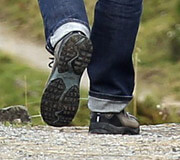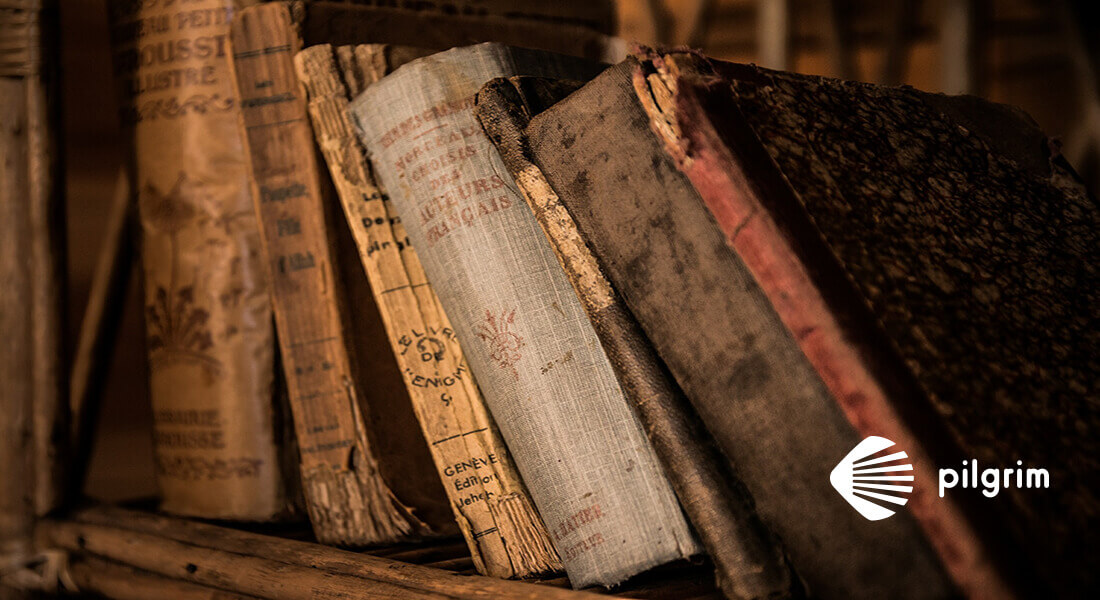In this post we will talk about all the symbols of the Camino de Santiago that every pilgrim should know.
These are characteristic objects, signs, places, etc. that are special and unique in the routes of the pilgrimage route.
YOU CAN ASO BE INTERESTED: PILGRIMS’ RITUALS ON ARRIVAL IN COMPOSTELA
If after taking a look, you do not know all the symbols, do not worry, once you read each of the points you will end up knowing the most key points that every pilgrim should know before venturing on the Camino.
Take note of what you read below…
WHAT ARE THE MOST IMPORTANT SYMBOLS OF THECAMINO DE SANTIAGO?
- The Codex Calixtinus
- The Credential of the Camino
- The Compostela
- The Botafumeiro
- The Jubilee Year or Holy Year
- The Bordón
- The Pumpkin
- The Mojones
- The Shell or Vieira
- The Yellow Arrow
CODEX CALIXTINUS
This manuscript is considered to be the first guide to the Camino de Santiago in history. Although its authorship has not been confirmed, many claim that its last appendix was written by the monk Aimery Picaud.
In addition to a whole series of advice, main points of interest, taverns and hospices, these fragments describe, among other things, liturgical texts, the deeds of historical figures, a polyphonic corpus…
For years, it remained forgotten under the walls of the Cathedral, acquiring special importance from the 19th century onwards.
After being transferred to a safe, this medieval jewel disappeared in 2011, and a year later it was discovered that it had been removed from the Cathedral by the person in charge of the maintenance of the temple.
At present, the Codex Calixtinus remains guarded under heavy security measures in the cathedral museum.
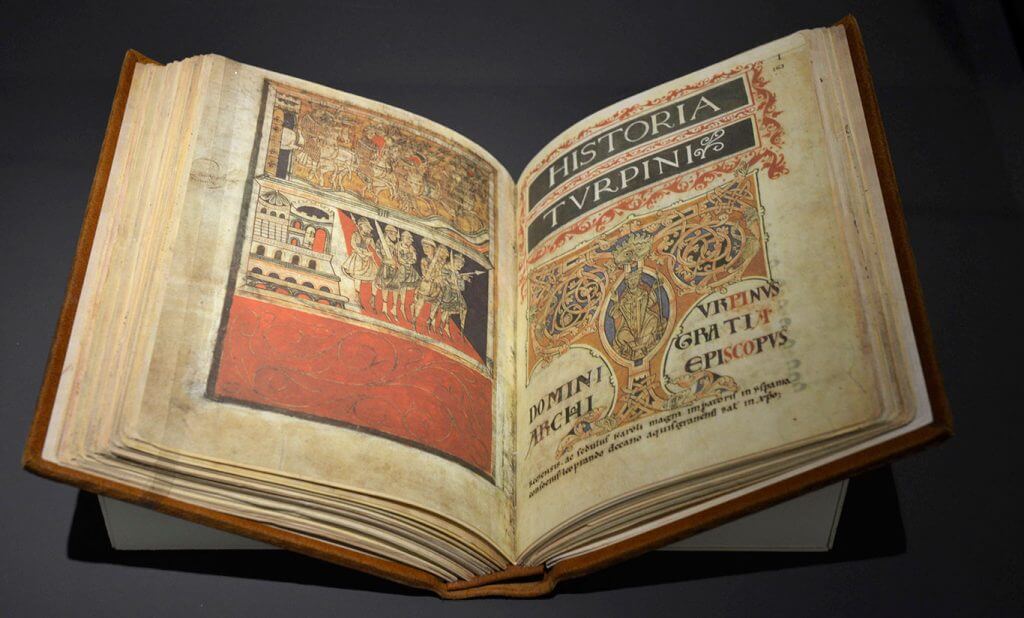
CREDENTIAL OF THE CAMINO
This Pilgrim Credential is considered as an ID or Passport.
It is therefore a cardboard sheet where the personal details of each person are written and, right next to it, we will find some empty boxes where we can sign in with the stamp of each official establishment or establishment adhered to the Camino through which we pass, thus proving that we have followed a specific pilgrimage route..
We must pay special attention to mark the dates under each stamp, so that when we arrive at the Pilgrim’s Office we can prove that we have covered the 100 kilometres on foot or 200 kilometres by bicycle and receive the Compostela.
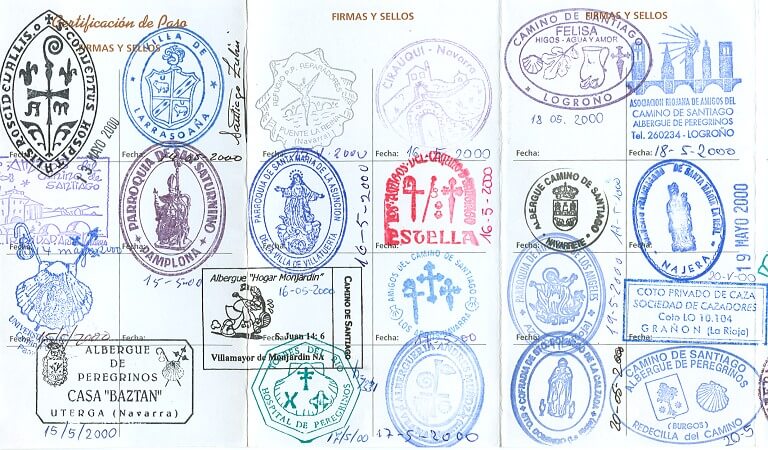
COMPOSTELA
The Compostela, erroneously known as “compostelana”, is the accreditation certificate given to you at the Pilgrims’ Office in Santiago when you reach the Galician capital after following one of the Pilgrims’ Routes to Santiago de Compostela.
Its origin dates back to the 9th and 10th centuries, when the rise of pilgrimages promoted the need to create some kind of nominative document that would identify pilgrims, granting them certain privileges when staying in the city to reward their achievement.
Currently, if you wish to obtain this diploma, you must cover at least the last 100 kilometres on foot or 200 kilometres by bicycle of one of the official Caminos.
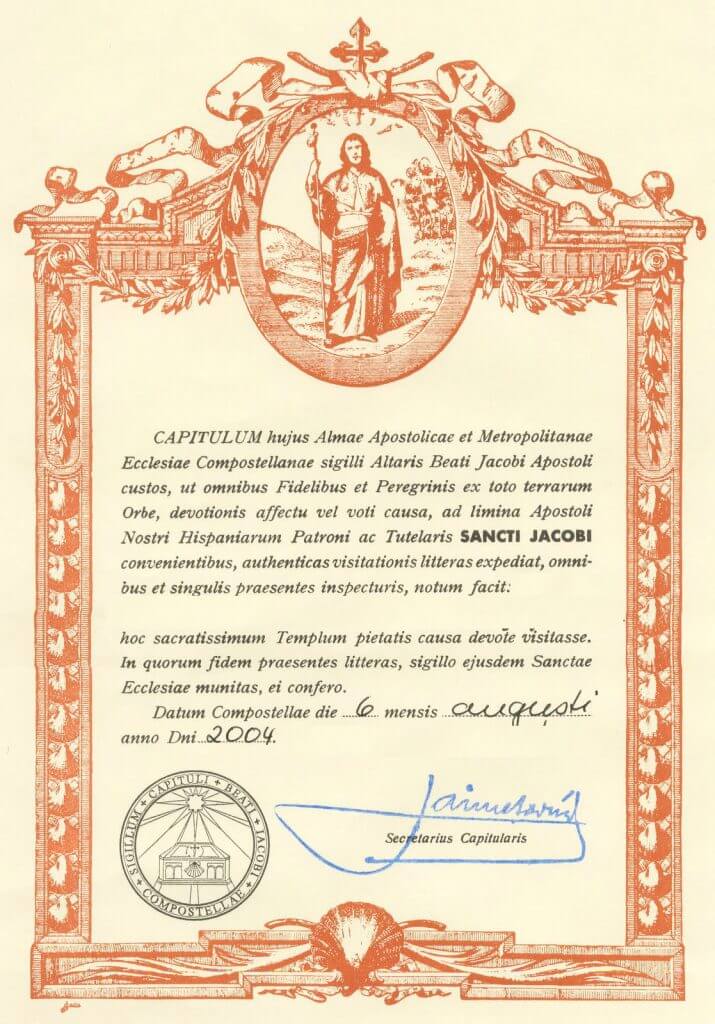
BOTAFUMEIRO
It is the heart of Santiago Cathedral, one of its main attractions along with the Portico de la Gloria and the majestic Plaza del Obradoiro.
Its origins are not entirely clear, and the tradition of introducing this enormous turibulum magnum in the masses of the Compostelan temple may date back to the 12th century.
Many claim, probably wrongly, that the Botafumeiro was used to mask the bad smells given off by pilgrims after long days of walking, but it really had a liturgical function.
The people in charge of moving the slightly more than 50 kilos of this censer are the tiraboleiros, eight people in charge of transporting it from the cathedral museum and tying it to its chains, which will swing it along the central aisle of the church.
This magnificent event can only be admired on selected dates, such as Easter Sunday or Santiago’s’ Day, 25 July.
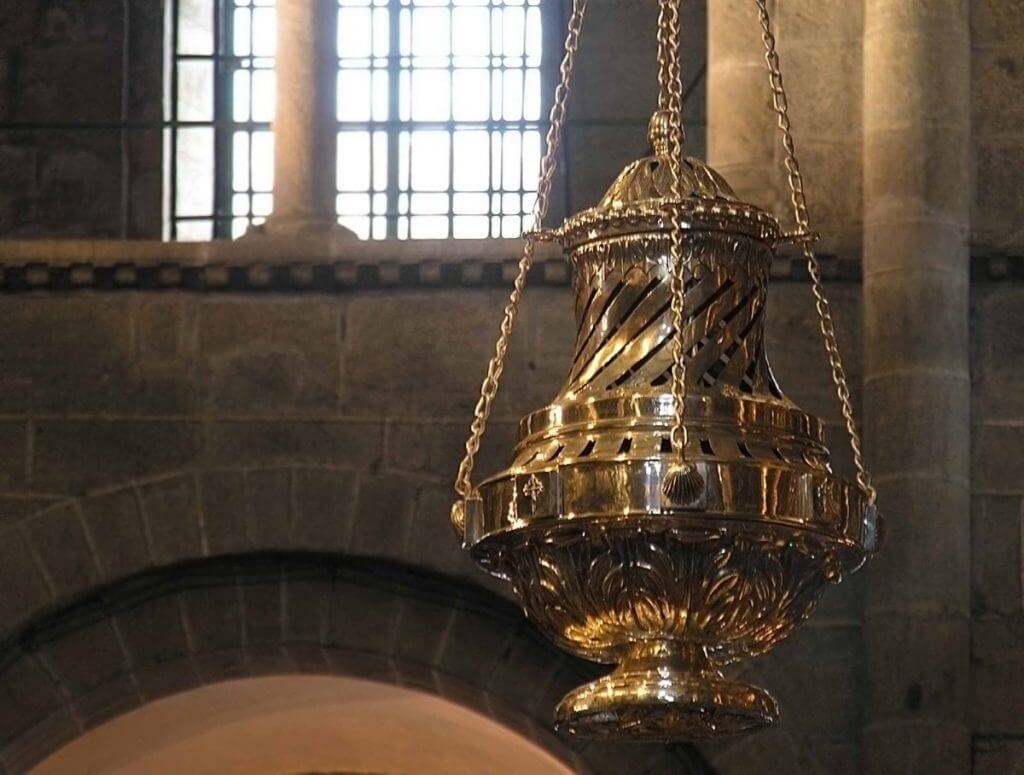
JUBILEE YEAR OR HOLY YEAR
This concept was born in the Old Testament, where it is narrated how every fifty years this holy year was celebrated, in which Jews could be forgiven of their sins, slaves were freed and expropriated lands were returned to their former owners.
Nowadays, the Holy Year has little to do with this Judeo-Christian tradition, giving it a spiritual rather than a material meaning.
In addition to the Ordinary Holy Years, which are celebrated in those years in which Santiago’s Day (25 July) falls on a Sunday, there are also Extraordinary Holy Years. These are called by the Pope, to commemorate a special event or in times of crisis, to proclaim and vindicate the importance of the Catholic faith.
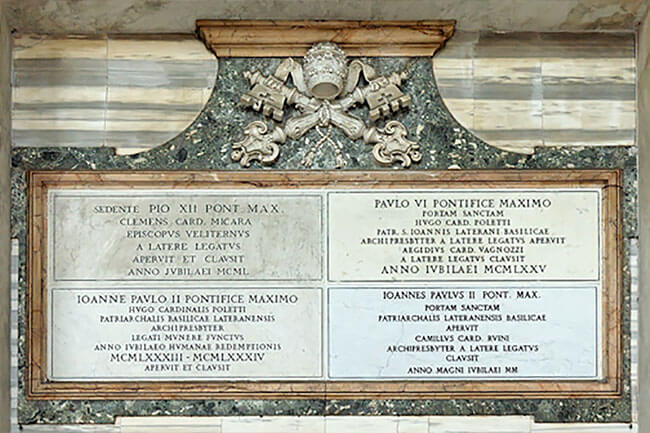
THE BORDÓN
To see a pilgrim without the traditional wooden staff or walking stick is quite unusual, as it is an indispensable point of support, especially in the most rugged terrain.
Originally, it was also used to hang tools such as the typical pilgrim’s shell or the pumpkin for carrying water, as well as to defend against wild animals.
Nowadays, many are replacing this wooden pole with modern trekking poles, losing some of the charm of going into the forest and getting one of their own, preferably from a chestnut or hazel tree.
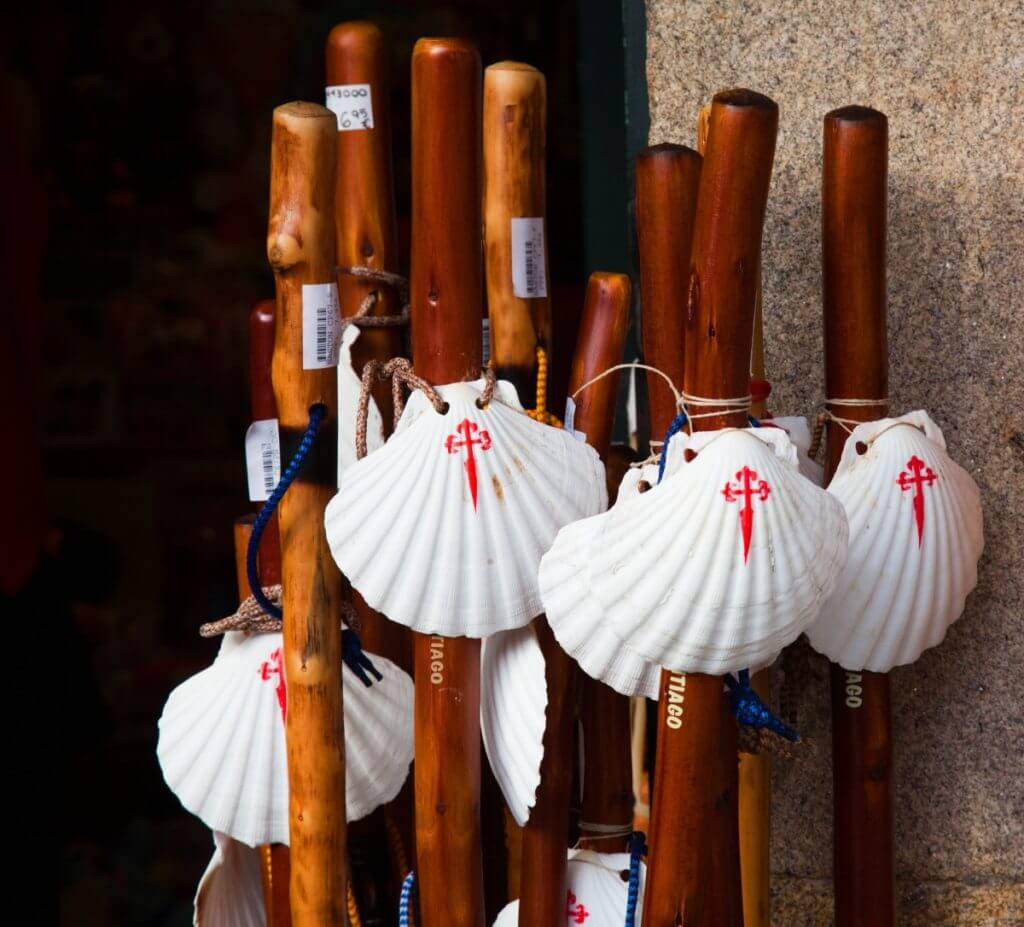
THE PUMPKIN
This is another of the traditional items that were indispensable for medieval pilgrims.
The custom of hanging these small pumpkins from the Bordon or from a belt has now fallen into decline, as their main function was to carry liquids and keep them cold.
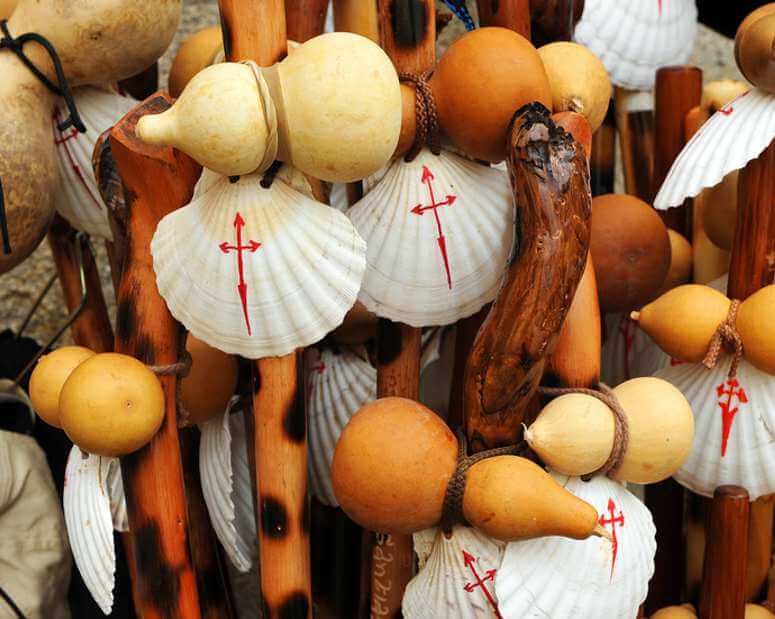
MOJONES
The Mojones are stone markers that indicate the distance between a specific point and Santiago de Compostela. One among other signs on the Camino.
In addition to the official ones, there are other types of Mojones that indicate complementary paths or detours to visit certain monuments or nearby points of interest. Depending on the area, they vary in size and colour, following a more or less continuous pattern, especially in Galicia.
Recently, the decision has been taken to replace all the granite Mojones in Galicia with more modern ones, which has generated a lot of controversy.
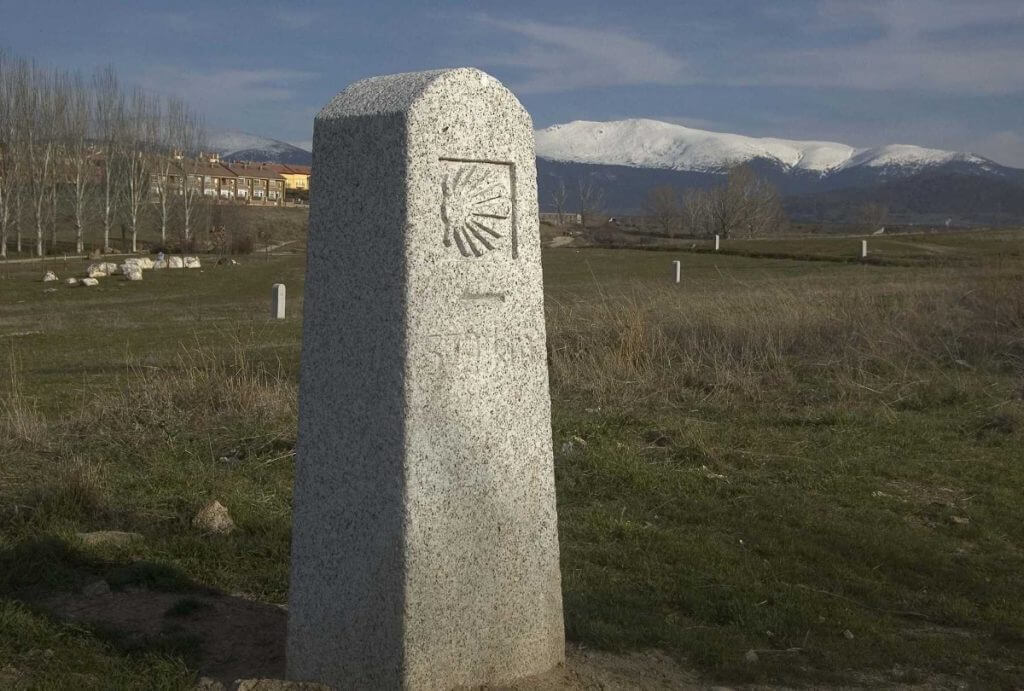
SHELL O VIEIRA
Venera, shell or simply vieira, refers to the hardest part of this mollusc, which has been closely related to the Jacobeo route since time immemorial.
It is already reflected in the Codex Calixtinus, as the symbol given by the clergy to the pilgrims when they reached the city of Compostela, as a sign of their stay in the Galician capital.
In addition to its symbolic meaning, representing the different routes that lead to Santiago, it also had a clear practical meaning, serving as a drinking vessel or simply as a utensil for collecting food.
Many also claim that it could be related to the Venus symbol, representing the resurrection or rebirth of pilgrims by ridding them of bad habits and thoughts.
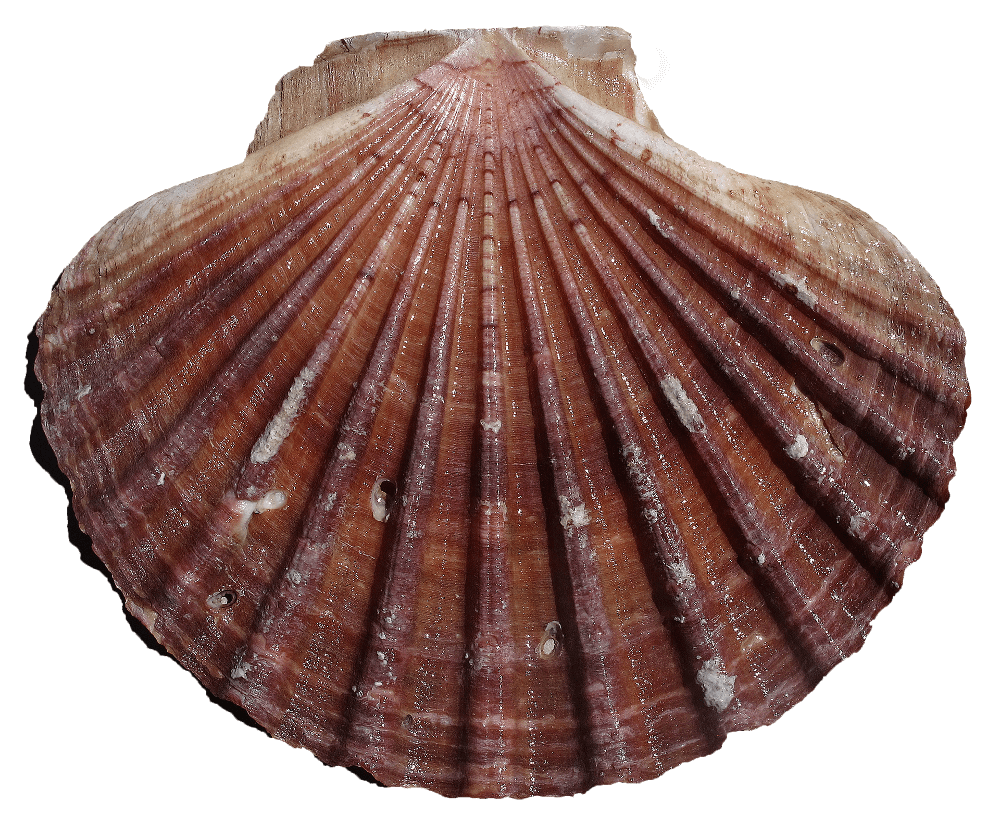
YELLOW ARROWS
This method of signing is the most common along all the pilgrims’ routes.
Its precursor was Father Elias Valiña, who in the 1970s began to paint this type of arrows along the French Way to help pilgrims on their way to Santiago de Compostela.
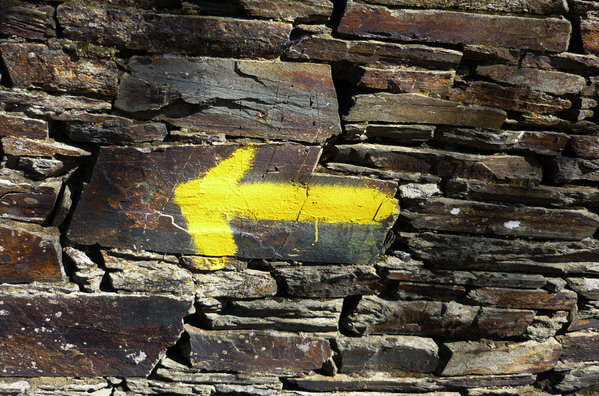
PILGRIM
If after seeing all these objects and symbols of the Camino de Santiago, you feel like venturing on the pilgrimage, do not hesitate to plan it, we help you!
Ultreia Pilgrims!
Plan your adventure!
We can fill you in, no strings attached!
